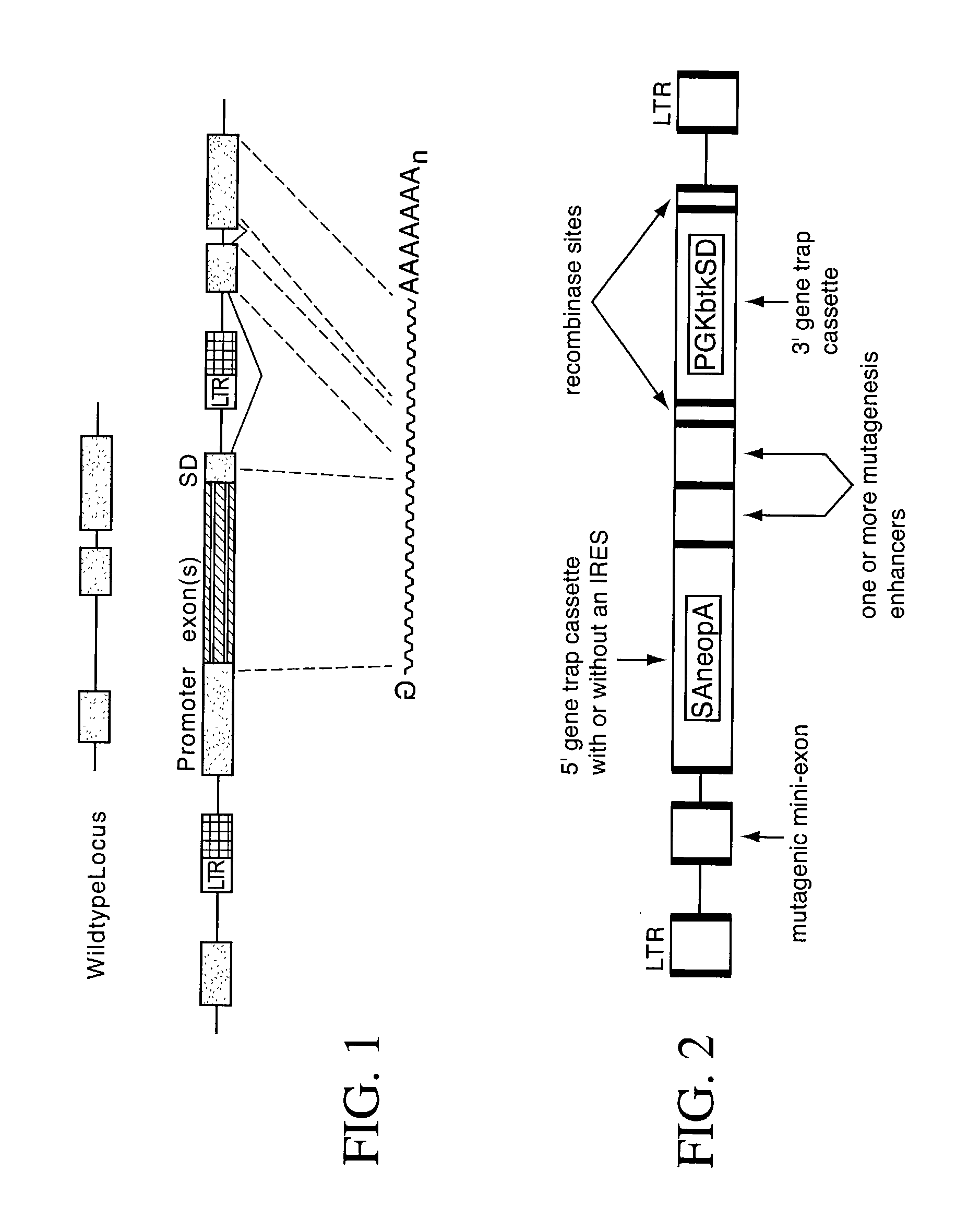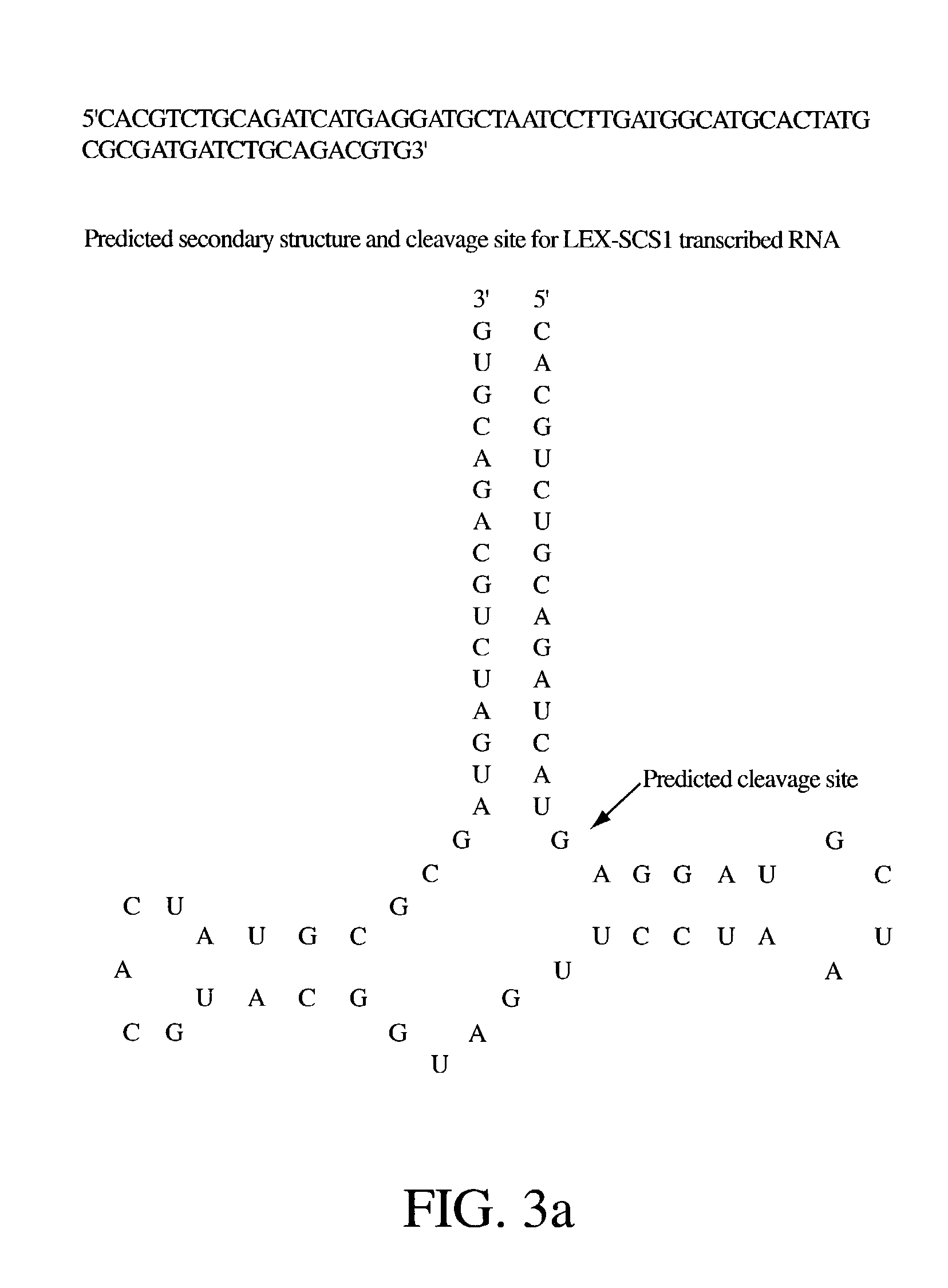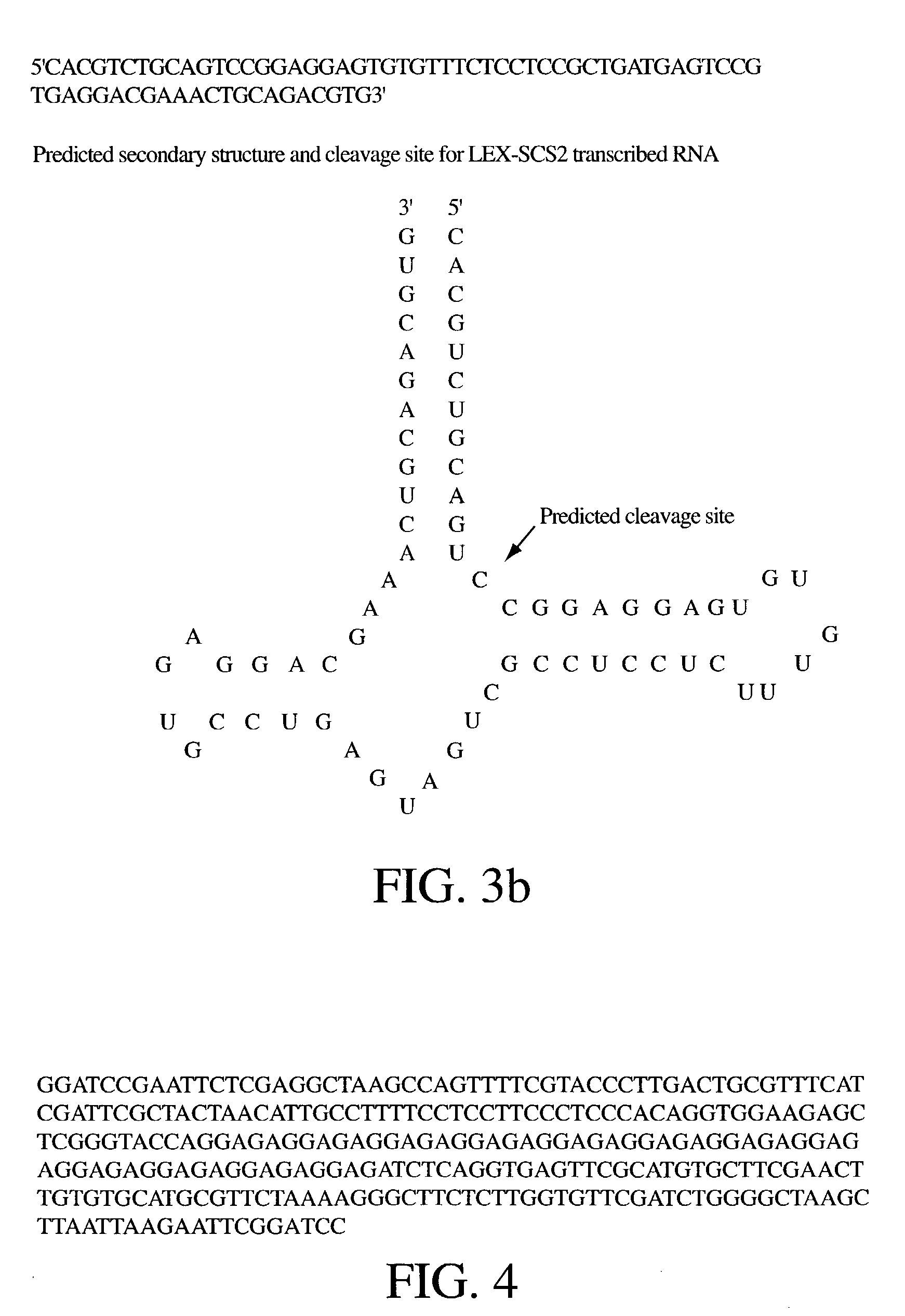Vectors for gene mutagenesis and gene discovery
a gene mutagenesis and gene discovery technology, applied in the field of recombinant vectors, can solve the problems of limited commercial scale exploitation of such vectors, relative inefficiency of first generation 3' gene trap vectors, and limit the total number of genes that can be quickly identified, so as to achieve the effect of rapid identification of the mutated or trapped gen
- Summary
- Abstract
- Description
- Claims
- Application Information
AI Technical Summary
Benefits of technology
Problems solved by technology
Method used
Image
Examples
Embodiment Construction
[0020] In the modern age of genomics, gene trapping has proven to be a powerful approach for both grouping gene sequences into functional categories, and identifying novel genes. For example, initial results have shown that about half of the gene trap events from embryonic stem cells thus far characterized identify gene sequences that have not been previously discovered by traditional cDNA library technology.
[0021] Gene trapping (using promoter traps) has been used in a variety of cell types to genetically screen for genes that are induced by inductive signals, differentiation events, or phenotypes of interest (i.e., in gene discovery). Additionally, such screens have been used to identify tumor suppressor genes, genes induced by cellular differentiation processes such as hematopoietic and muscle cell differentiation, genes induced by signals that induce cellular events such as B cell activation or apoptosis, and genes activated by small molecules or other compounds. These studies i...
PUM
| Property | Measurement | Unit |
|---|---|---|
| pH | aaaaa | aaaaa |
| pH | aaaaa | aaaaa |
| pH | aaaaa | aaaaa |
Abstract
Description
Claims
Application Information
 Login to View More
Login to View More - R&D
- Intellectual Property
- Life Sciences
- Materials
- Tech Scout
- Unparalleled Data Quality
- Higher Quality Content
- 60% Fewer Hallucinations
Browse by: Latest US Patents, China's latest patents, Technical Efficacy Thesaurus, Application Domain, Technology Topic, Popular Technical Reports.
© 2025 PatSnap. All rights reserved.Legal|Privacy policy|Modern Slavery Act Transparency Statement|Sitemap|About US| Contact US: help@patsnap.com



